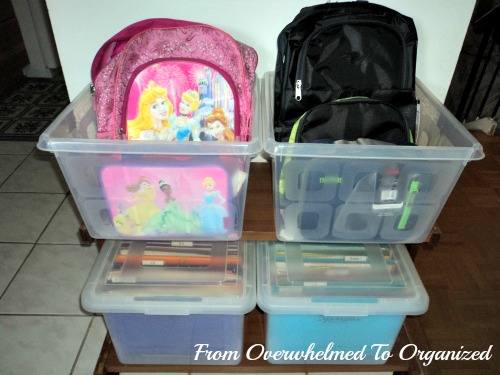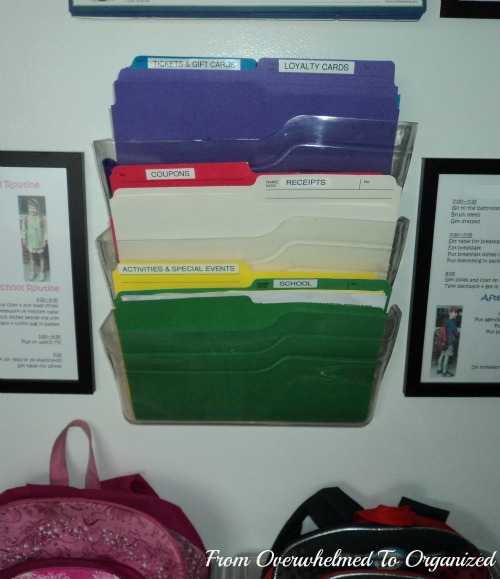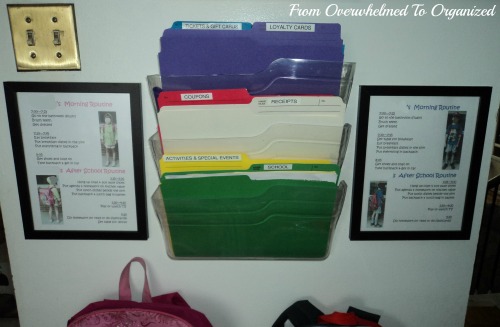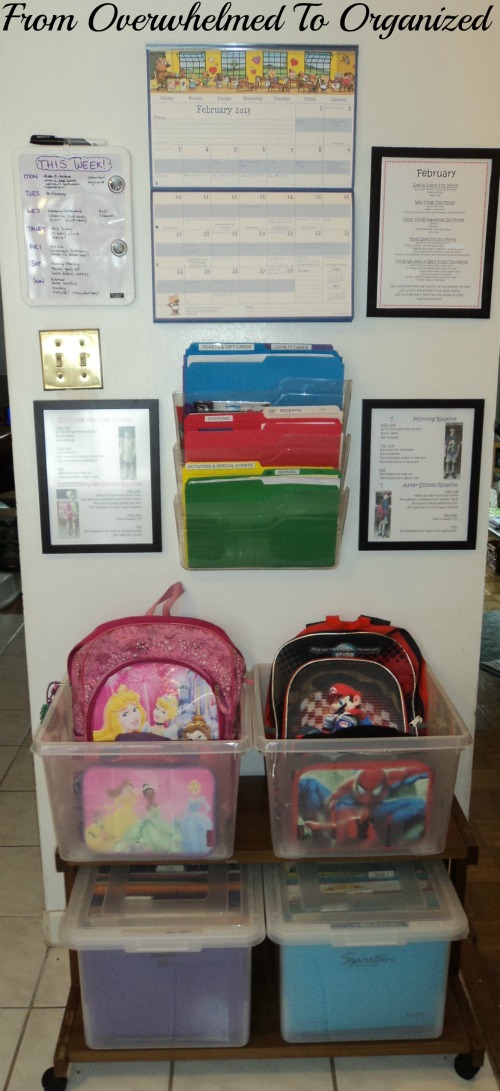Creating Fall Routines So You Don’t Get Overwhelmed
Well, it’s happened. Summer holidays are pretty much over and school is starting. Notice I didn’t say “summer” is over. It’s not. Summer doesn’t officially end for a few weeks and I for one plan to enjoy every little bit of it I can still. There are still lots of warm sunny, and even humid days ahead, so I’m not putting away our summer clothes and sandals yet!
But, despite what the calendar tells me, it is definitely fall because school is starting. And with fall comes new activities, goals and routines. September is kind of like January in that it’s a new year. Whether you have kids or not, the school year is a sort of reset. A fresh start. A good time to establish new habits.
It’s also a very busy time as various activities, clubs, lessons, and sports start up again. It can be overwhelming if you’re not organized.
Routines help keep you organized and reduce that overwhelming feeling when you get really busy.
Today I want to share some of the ways we’ve been getting organized for fall in our home for many years. It’s different now that both my “kids” are in university but I hope these tips will help you set up a fall routine as well.
1. Establish a home for school “gear” and make it a routine to use it
Kids need school bags, lunch bags, school supplies, books, instruments, and all kinds of other stuff for school. It will end up getting dumped all over the place if you don’t have a designated home for it! Find a place that will be easy to remember and easy to access.
Then get your kids in the habit of putting their own things away every day when they come home, returning everything to this spot when they’re finished with it (homework, school supplies, etc.), and taking what they need from here every morning on their way out the door. This way you aren’t frantically searching for things in the morning or forgetting items that are needed. And you eliminate the pile of stuff that otherwise lands near the door.
If your kids are involved in sports, music, or other activities, do the same thing for the items they need for them. Ideally these should be separate places, especially if their activities are not done on a daily basis. Unless the gear is very minimal for the activities, in which case you could combine it with the school gear.
It’s also great for parents to have a similar place for their “gear” for work and/or hobbies and activities.
In our home, my kids kept all their school gear in their bins in our kitchen command centre.
This was close to our front door, right next to the table where they did their homework, and within arms’ reach of the kitchen where they emptied out their lunch bags and where we could easily grab them when we made their lunches in the morning.
This zone made our mornings easier, our after school time easier, and we were no longer tripping over bags in the hallway on our way to the bathroom (or rushing to hide them when guests come over).
They kept most of their extra-curricular activities’ gear in their bedrooms since they didn’t use it every day. That way it wasn’t cluttering up our main floor the rest of the week.
2. Set up a place for school and activity paperwork and make it a routine to use it
Notices, memos, newsletters, schedules, calendars. I think they multiply while we’re sleeping, especially at the beginning of a school year! Find a place to keep everything so you don’t have piles of paper cluttering up your counters or table. Many people find having folders works well. You can have separate folders for each child, each activity, or whatever will work best for your family.
We kept all our paperwork from school and extra-curricular activities in the wall files in our command centre.
When my kids both went to the same school, I just had one file for school. And they didn’t do a lot of extra-curricular activities so one file was sufficient for us usually. If your situation is different you can easily add more folders to this system.
My whole family knew that whenever they needed to look up something for school or an activity they’d find the paperwork in these files and it was no longer piled up on my kitchen table. I sorted through these folders at least once every month to clear out anything that was no longer needed.
3. Create a morning routine for each member of the family, as well as an after school/work routine and a before bed routine
It really helps things move along during each of these busy times when everyone knows what they should be doing. Once the routines are established they become habit, which saves you having to nag remind everyone what they should be doing. Saving you from stress and makes for a more peaceful home.
My kids’ routines are also part of our command centre.
We just had morning and after school on here because the before bed routines were pretty firmly established. We updated these every fall and sometimes in January as well.
4. Simplify your lives by being intentional about how many activities each person participates in
One of the biggest reasons families get overwhelmed in the fall is that each person is involved with several different activities, and parents sometimes just feel like a taxi driver getting everyone where they need to be, when they need to be there. Depending on the activity, there are extra things that accompany them: recitals, extra practices, year-end parties, etc. These add even more pressure to an already full schedule.
Don’t get me wrong. I’m not saying activities are bad. In fact, the problem is that there are so many great things to do. Sports, music lessons, Scouts, church groups, community/cultural activities, dance, and on and on the list goes! Kids benefit in so many ways from being part of them.
But, it’s OK to not participate in everything.
Here are just a few of the ways that reducing activities can help your family:
- More time at home as a family
- Healthier meals (less take-out on the run)
- Increased communication at meal times
- More time for homework and school projects
- Less stress in scheduling
- Reduced financial strain to pay for all the activities
Our kids usually participated in only one activity per season, and usually had one season “off”. In the fall, my daughter usually went to ballet classes and my son took skating lessons. In the winter my son didn’t usually do any activities because he played baseball all spring and summer. My daughter continued on with ballet in the winter and spring but didn’t do an activity in the summer.
It worked for us because we never knew my hubby’s work schedule and mine varied a lot too. It was too hard to coordinate too many evenings out. And we didn’t always get dinner together when my hubby worked late, so we didn’t want to have any more evenings where we’re eating dinner early (without him) to get to activities.
Once in awhile the kids took swimming lessons as well as ballet and baseball. But I intentionally chose late Saturday mornings for swimming so it wasn’t another evening (and late enough that we could still have relaxing Saturday mornings!).
You need to choose for your family what a good amount of activities for each person is. Some families allow their children to choose 1 sport and 1 music activity (guitar lessons, etc.) per season. Others work out an annual plan for what each person will participate in. It’s different for each family, depending on your kids’ interests, your finances, the parents’ work schedules and availability to drive family members to activities, etc. Plus, I think the ages of your children comes into play as well.
My point is just to be intentional about what activities you do so you aren’t as overwhelmed. Don’t just say yes to everything without counting ALL the costs.
5. Create a weekly schedule and a weekly reminders list and make it a routine to use them
This is important so everyone in the family knows where they need to be and what they need to do each day. Once you establish a weekly schedule, make it part of your routine to update your reminders list every week so nothing falls through the cracks.
I kept track of our schedules and weekly reminders in our command centre.
As you’re setting up a weekly schedule, search out options when you’re choosing activities so you can coordinate which evenings you’re busy and which ones you’re at home. Some families set up their schedule so that only one person has an activity on any given night. Others prefer to have a few busy evenings with multiple activities and then have quieter evenings the other nights. You don’t always have control over this, but where possible it’s good to set it up so it works for you.

This picture is old, but the system worked for over a decade. All our appointments, schedules, activities, and commitments went on our calendar and every week I updated our weekly reminders memo board with what was happening that week, what we needed to remember, and things we needed to do. It was part of MY weekly routine. And part of my daily routine too. I checked this baby multiple times a day.
As you can see, a lot of what kept me from being overwhelmed in the fall was taken care of in our command centre. There are more details about each element in the posts I’ve linked to, and you can see all the command centre posts here.
| Wall Files for Papers School Gear Routines Monthly Family Goals Weekly Notes and Calendar Organizing Kids’ Schoolwork |
I especially recommend the family goals post since September is such a great time to set new goals as a family and not just survive the fall, but live intentionally and thrive this fall!
If you need more help creating specific routines (or see other ideas or download printables), I have a ton of ideas on my Routines and Chores board on Pinterest.
You can also check out lots of great organizing tips on my Organized for School board.
I’m not a “fall” person because I love summer so much and enjoying fall feels like I have to admit that summer’s over. But, I do like setting up our fall routines and trying to work things out so that I’m not creating situations that overwhelm me or my family members.
I hope these tips help you do the same!
What are your fall routines? What do you do to keep from being overwhelmed in the fall? How do you decide what activities your family will be involved in?

I am a professional organizer and author, ready to help you declutter and organize the overwhelming areas in your home and develop systems that will work with your family’s lifestyle to help keep you organized!






